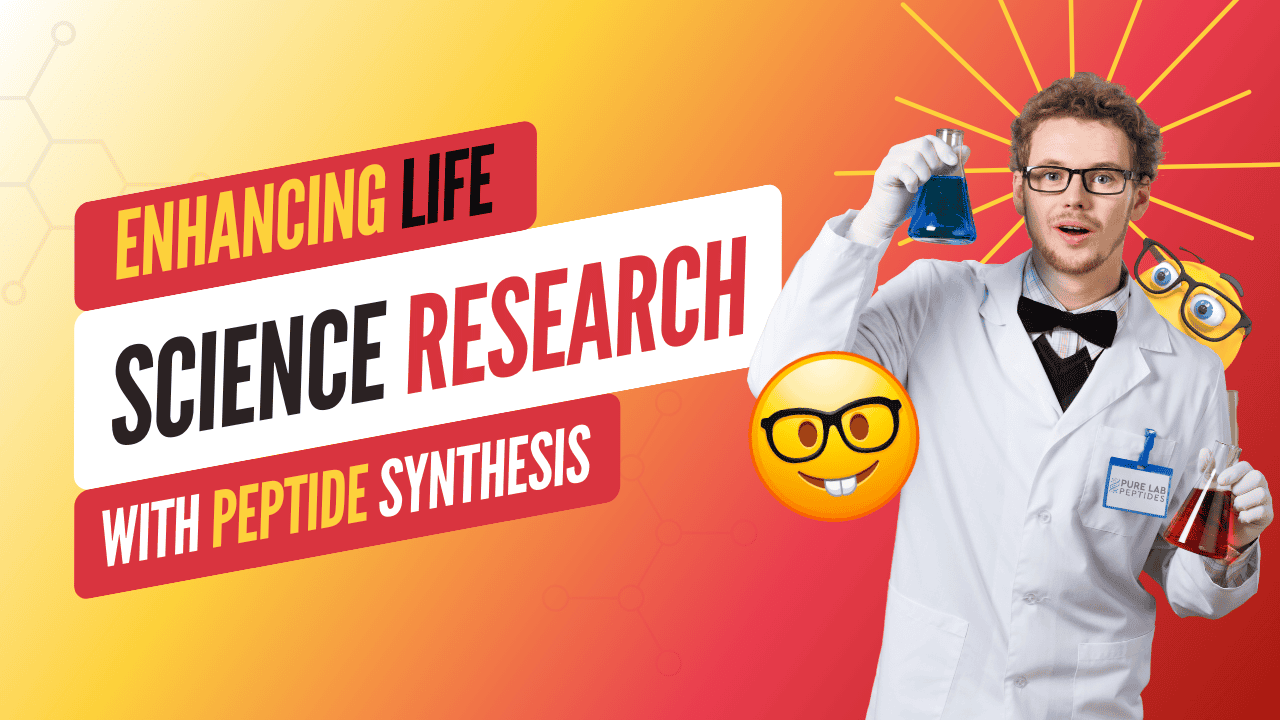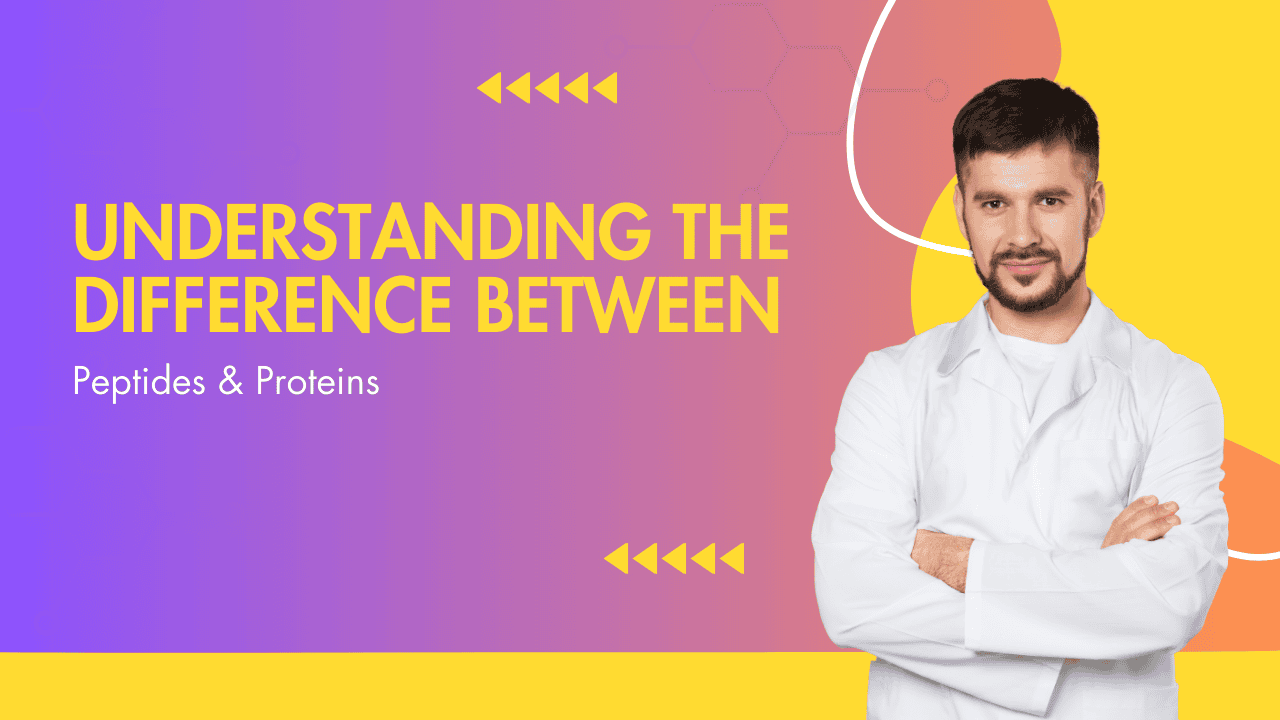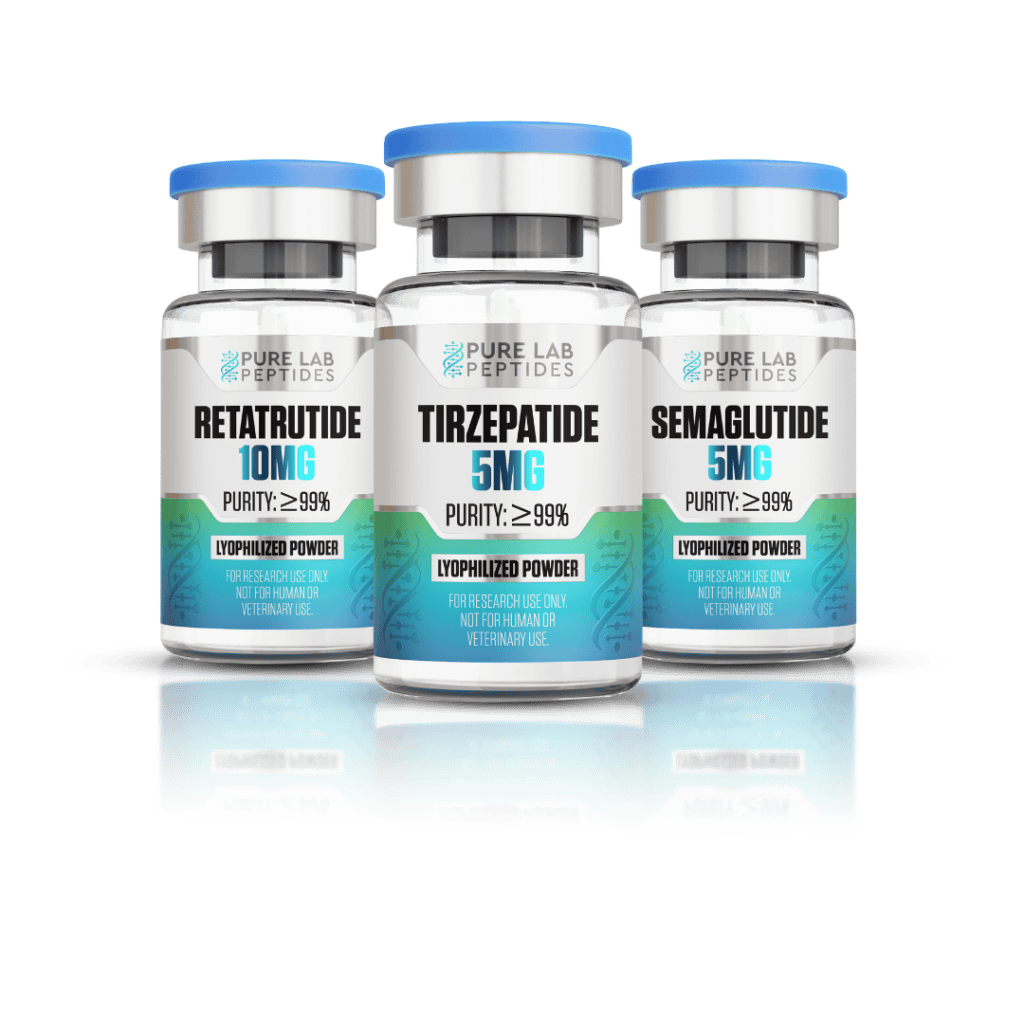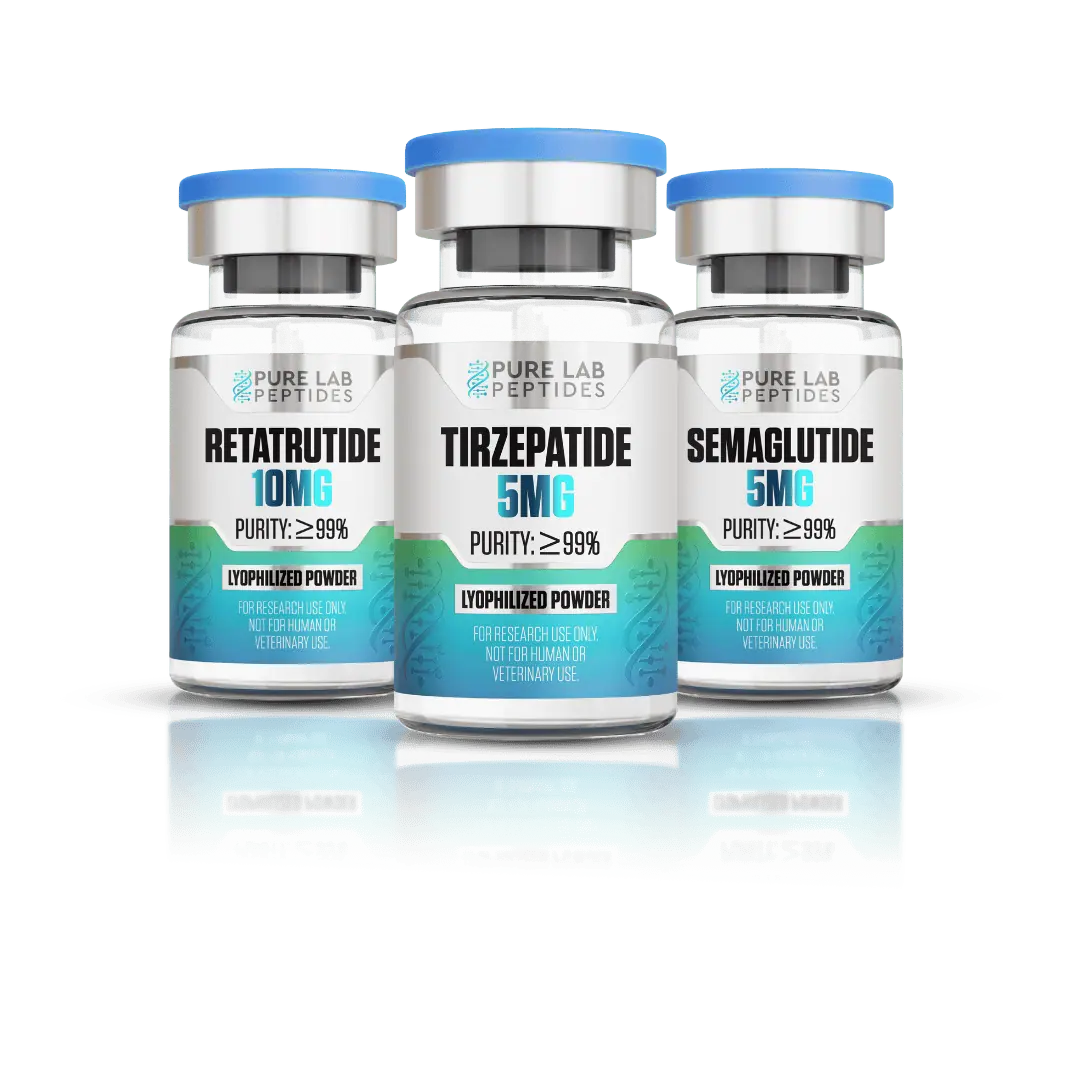

Have you ever wondered what separates peptides and proteins in the vast realm of biochemistry?
This blog delves into the nitty-gritty of the molecules that make up our bodies’ basic functions, giving you a crystal-clear understanding of the difference between peptides and proteins.
Let’s embark on this fascinating journey together, shall we?
A peptide is a short chain of amino acids joined together by peptide bonds. These short chains typically consist of 2 to 50 amino acids. Think of them as the body’s basic building blocks, forming the foundation of more complex molecules.
Proteins, on the other hand, are typically larger and more complex structures made up of one or more polypeptides. They consist of 50 or more amino acids and exhibit tertiary and quaternary structures, making them functionally dynamic.
Indeed, peptides are smaller than proteins and have a simpler structure. This simplicity allows peptides to quickly enter the bloodstream, benefiting the body in similar ways to proteins but with more immediate effects.
Structurally, peptides contain fewer amino acids than proteins. While peptides are strings of the body’s basic building blocks – amino acids, proteins are made up of strings of 50 or more amino acids, forming complex conformations like tertiary and quaternary structures.
The short amino acid chains in peptides mean they have a less complex structure, allowing them to perform specific tasks more efficiently than proteins. This is why peptides play crucial roles in functions like signaling, hormone release, and rapid actions.
Peptides regulate a multitude of activities, from acting as hormones to speeding up chemical reactions. Proteins, on the other hand, serve as structural components in tissues and organs, support immune responses, and more.
Peptides and proteins are fundamental molecules made up of amino acids. Peptides are short chains, while proteins are more extensive structures. Together, they orchestrate almost every biological function in the body.
Peptides and proteins play essential roles, from repairing tissues and producing enzymes to regulating hormonal activities. They literally give cells their shape and maintain various biological functions.
Yes, functionally, one could consider peptides as smaller versions of proteins. But structurally, they are distinct entities, with peptides being simpler and quicker to act.
Peptides and proteins influence cellular activities by acting as enzymes, receptors, and messengers. They participate seamlessly in cellular machinery to ensure the body’s optimal function and repair.
While peptides can join to form longer polypeptide chains, the direct transformation from a peptide into a protein doesn’t typically happen in nature. Instead, proteins are synthesized from amino acids directly, with peptides often serving specific signaling roles.
Peptides and proteins are both crucial for muscle repair and growth. Proteins provide the structural framework necessary for building muscle, while peptides can act more rapidly to stimulate repair mechanisms after exercise.
The synthesis of peptides is often faster and more straightforward than that of proteins, which require complex ribosomal machinery to assemble their long and intricate chains of amino acids.
A polypeptide chain is a longer chain of amino acids linked by peptide bonds. These chains fold into specific structures, forming the backbone of proteins.
Polypeptides are longer than peptides but shorter than fully formed proteins. While peptides contain fewer than 50 amino acids, polypeptides can have 50 or more amino acids.
A protein is essentially one or more polypeptides that fold into a functional unit. These polypeptides interact and stabilize to form the protein’s final structure.
Absolutely! Polypeptides fold into various conformations, ultimately forming functional proteins that perform myriad roles within organisms.
Polypeptide chains fold into complex structures by forming hydrogen bonds, hydrophobic interactions, and disulfide bonds, among others. This folding is crucial for their functionality.
The bonds within polypeptide chains, i.e., peptide bonds, are crucial for maintaining the stability and integrity of peptides and proteins. These bonds prevent denaturation and ensure proper function.
Whey protein is a popular protein supplement derived from milk. It’s rich in essential amino acids and quickly absorbed, making it ideal for post-workout recovery.
Whey protein is essentially a complete protein powder that contains multiple peptide subunits. It offers a robust source of protein and peptides necessary for muscle repair and growth.
Whey protein is a staple in bodybuilding due to its quick absorption and high amino acid profile. It enhances muscle synthesis and accelerates recovery post-exercise.
Yes, whey protein is considered a complete protein as it contains all 20 essential amino acids required for human health.
Whey protein is produced through the separation of whey from milk, followed by various processing steps like filtration and drying to concentrate the protein content.
Whey protein is often preferred due to its high bioavailability and rapid digestion, unlike other protein sources like casein or plant-based proteins that might be slower to digest.
Consuming whey protein can elevate the levels of specific peptides in the bloodstream, providing rapid support for muscle repair and immune function.
Peptide drugs are medications that utilize short chains of amino acids to target specific physiological processes. They offer precision in treating ailments like diabetes and some cancers.
Peptide drugs are highly specific and often have fewer side effects than traditional medications. They work by mimicking natural peptides and proteins in the body.
Peptide drugs offer targeted therapy with minimal side effects, making them effective for treating various conditions, including hormonal imbalances and metabolic disorders.
Peptide drugs work by binding to specific receptors on cells, triggering desired responses, such as insulin release from the pancreas in diabetics.
While generally considered safe, peptide drugs can sometimes elicit immune responses. Ongoing research aims to mitigate these effects and enhance their efficacy.
Peptide drugs are synthesized using solid-phase peptide synthesis or recombinant DNA technology, ensuring high purity and specificity.
Traditional pharmaceuticals often have broader, less specific action, whereas peptide drugs provide targeted effects, reducing unintended interactions and side effects.
Protein powders are dietary supplements that provide concentrated protein from various sources, including whey, soy, and pea.
Protein powders primarily offer whole proteins, whereas peptides used in supplements are short chains that provide quicker benefits.
Selecting protein powders depends on your dietary preferences, protein content, and any specific health goals, like muscle building or weight loss.
Yes, protein powders can provide peptides in addition to whole proteins, offering comprehensive nutritional support for muscle repair and growth.
Protein powders help athletes meet their increased protein requirements, aiding in muscle repair, recovery, and overall performance enhancements.
Various protein powders are available, including whey, casein, soy, and plant-based options, each catering to different dietary needs and preferences.
Over-reliance on protein powders can lead to digestive issues, and it’s essential to balance them with whole-food sources to prevent imbalances in nutrition.
Emerging research on peptides and proteins promises revolutionary treatments in medicine, from regenerative therapies to precise drug delivery systems.
Peptide therapy is advancing with new synthesis techniques and clinical trials, paving the way for highly effective and individualized treatments.
Innovations in protein supplementation are constantly evolving, with new sources and formulations aiming to enhance bioavailability and effectiveness.
The future of peptide and protein research looks bright, with potentials in treating chronic diseases, personalized medicine, and improving overall health outcomes.
Following reputable journals, attending scientific conferences, and engaging with professional communities are excellent ways to stay informed about the latest in peptide and protein research.
Trends like anti-aging treatments and metabolic disorder management highlight the growing interest and efficacy of peptide-based therapies.
With new technologies, our understanding of polypeptide folding and functionality is expanding, offering insights into designing more effective proteins and peptides.
Peptides and proteins are crucial in maintaining the body’s functions, including tissue repair, enzyme function, and overall health.
Optimal sources include lean meats, dairy products, eggs, and plant-based options like legumes and nuts, ensuring a balanced intake of amino acids.
Daily requirements vary, but a general guideline is about 0.8 grams of protein per kilogram of body weight, with tailored needs for high-impact work like bodybuilding.
Both peptides and proteins are pivotal for muscle repair, with peptides providing quicker action and proteins offering sustained support.
Peptides are generally absorbed faster than whole proteins, allowing them to enter the bloodstream quickly and offer immediate benefits.
Peptides offer quicker benefits, while whole proteins provide long-term support. Choosing between them depends on specific goals and immediate needs.
Peptides and proteins are increasingly used in treating diseases, from cancer to hormonal imbalances, thanks to their specificity and efficacy.
Peptides and proteins play essential roles in diagnostics, from biomarkers in blood tests to advanced imaging techniques.
New drug development often leverages the specificity of peptides and proteins to create more targeted and effective treatments.
Peptides and proteins are crucial for immune response, acting as antigens and antibodies that protect the body from pathogens.
Challenges include ensuring stability, reducing immune responses, and achieving targeted delivery without degradation.
Peptides and proteins in regenerative medicine can promote healing and tissue regeneration, highlighting their versatile applications in medical treatments.
Peptides are short chains of amino acids, while proteins consist of one or more polypeptides with complex structures. The amino acid composition determines their function and stability.
Peptides and proteins commonly act as substrates or inhibitors in enzymatic reactions, playing a crucial role in metabolic pathways.
Proteins can form alpha-helices and beta-sheets, while peptides usually form simpler structures. These variations determine their functional diversity.
Post-translational modifications, such as phosphorylation and glycosylation, alter the activity and stability of peptides and proteins, ensuring proper cellular function.
Peptides act as short-lived signaling molecules regulating the activities of other molecules, crucial for maintaining homeostasis.
Peptides and proteins are involved in numerous pathways like glycolysis, the citric acid cycle, and cellular respiration, underlining their biochemical importance.
Understanding these basics can significantly enhance our grasp of biological processes and health management. Whether you’re a biochemist or just curious about the body’s workings, knowing these differences enriches our appreciation of life’s molecular intricacies.
Peptide hormones typically consist of fewer amino acids and are structurally simpler than protein hormones. Protein hormones, made up of one or more polypeptides, are more complex. Both types play crucial roles in regulating various bodily functions.
Whey protein is a complete protein supplement high in essential amino acids, ideal for muscle recovery and growth. Peptides, on the other hand, are short chains of two or more amino acids and are absorbed quicker, providing immediate benefits such as enhanced muscle repair and hormone regulation.
Peptides are identified by their short chains of amino acids, typically 2 to 50 in length, and are held together by peptide bonds. Proteins, on the other hand, are made up of 50 or more amino acids and often exhibit more complex structures such as tertiary and quaternary.
Peptides can provide quicker benefits for muscle repair due to their smaller size and rapid absorption. However, proteins serve as structural components essential for sustained muscle growth. Both are beneficial, but peptides offer immediate support while proteins contribute to long-term muscle building.
It depends on your specific health goals. Peptides offer rapid benefits, such as hormone regulation and quick muscle repair, while proteins provide long-term structural support and muscle growth. Both are important and can be used complementarily.
Yes, peptides are effective for muscle growth by enhancing muscle repair and reducing recovery time. They work quickly due to their smaller structure and ability to enter the bloodstream fast, providing immediate benefits such as increased collagen production and hormone regulation.
While peptides can be highly effective, overuse or incorrect usage can lead to side effects such as imbalances in hormone levels. Certain types of peptides might also cause immune reactions. Consulting a healthcare provider is crucial to ensure safe and effective use.
Yes, certain peptide hormones can stimulate the production of testosterone. By regulating hormone levels, these peptides can enhance muscle growth, libido, and overall male health. However, misuse without medical supervision can lead to hormonal imbalances.
Peptides are identified by their sequence of two or more amino acids linked by peptide bonds. They are usually shorter than proteins, with lengths ranging between 2 and 50 amino acids, and can be detected through techniques like mass spectrometry and chromatography.
Proteins are identified by their longer chains of 50 or more amino acids and complex structures such as tertiary and quaternary conformations. Methods like X-ray crystallography, nuclear magnetic resonance (NMR), and electrophoresis are commonly used for protein identification.
Dr. Richard DiMarchi is a renowned expert in peptide chemistry and biotechnology, with over 30 years of invaluable contributions to the field. His work focuses primarily on peptide drug design, synthesis, and their application in treating metabolic diseases. Dr. DiMarchi’s innovations have significantly impacted the development of peptide-based therapeutics, exemplifying both experience and expertise in this specialized field.
Key publications by Dr. DiMarchi include:
Design and Synthesis of Potent Glucagon-like Peptide-1 Agonists – This study, published in Biochemistry, presents a detailed synthesis of potent GLP-1 agonists, helping pave the way for advanced therapies in diabetes management.
Optimization of peptide pharmacodynamics through chemical design – Featured in the Journal of Medicinal Chemistry, this work explores how chemical modifications can enhance the therapeutic efficacy and safety of peptide drugs.
Dr. DiMarchi’s groundbreaking research has earned him numerous awards, such as the American Chemical Society’s Arthur C. Cope Award, acknowledging his authority and trustworthiness. His practical approach to peptide science ensures that his insights remain pivotal for future advancements in peptide therapeutics.
Dr. Anna Maria Papini is an esteemed biochemist known for her comprehensive expertise in peptide and protein science. With a career spanning over two decades, Dr. Papini has been instrumental in researching peptide structures, functions, and their application in immunology. Her work on antigens and vaccine development showcases her profound understanding and authoritative stance in peptide research.
Significant publications by Dr. Papini include:
Synthetic Peptides as Probes for Assessing Protein Conformation – This article in Nanoscale details how synthetic peptides can be utilized to study protein conformations, providing new methodologies in understanding protein structures.
Peptide-based vaccines: from preclinical perspectives to clinical trials – Published in Naunyn-Schmiedeberg’s Archives of Pharmacology, this paper reviews the development and progress of peptide-based vaccines, offering insights into future therapeutic strategies.
Dr. Papini’s dedication and innovative contributions have been recognized through various accolades, including the prestigious Leonardo da Vinci Award for Excellence in Peptide Science. Her expertise not only advances academic knowledge but also influences practical applications in medicine, underscoring her trustworthiness and significant impact in the field.
Andjelković, U., Tufegdžić, S., & Popović, M. (2017). Use of monolithic supports for high‐throughput protein and peptide separation in proteomics. Electrophoresis, 38(22–23), 2851–2869. https://doi.org/10.1002/elps.201700260
Jeihanipour, A., & Lahann, J. (2022). Deep‐Learning‐Assisted stratification of amyloid beta mutants using drying droplet patterns. Advanced Materials, 34(24). https://doi.org/10.1002/adma.202110404
Katsila, T., Siskos, A. P., & Tamvakopoulos, C. (2011). Peptide and protein drugs: The study of their metabolism and catabolism by mass spectrometry. Mass Spectrometry Reviews, 31(1), 110–133. https://doi.org/10.1002/mas.20340
Kundlacz, T., & Schmidt, C. (2023). Deciphering Solution and Gas-Phase Interactions between Peptides and Lipids by Native Mass Spectrometry. Analytical Chemistry, 95(47), 17292–17299. https://doi.org/10.1021/acs.analchem.3c03428
Liebich, V. J., Avrutina, O., Habermann, J., Hillscher, L. M., Langhans, M., Meckel, T., Biesalski, M., & Kolmar, H. (2021). Toward fabrication of bioactive papers: covalent immobilization of peptides and proteins. Biomacromolecules, 22(7), 2954–2962. https://doi.org/10.1021/acs.biomac.1c00354
Miller, M. A., Garry, R. F., Jaynes, J. M., & Montelaro, R. C. (1991). A structural correlation between lentivirus transmembrane proteins and natural cytolytic peptides. AIDS Research and Human Retroviruses, 7(6), 511–519. https://doi.org/10.1089/aid.1991.7.511
Myers, J. K., Pace, C. N., & Scholtz, J. M. (1997). Helix propensities are identical in proteins and peptides. Biochemistry, 36(36), 10923–10929. https://doi.org/10.1021/bi9707180
Ploetz, E. A., Karunaweera, S., Bentenitis, N., Chen, F., Dai, S., Gee, M. B., Jiao, Y., Kang, M., Kariyawasam, N. L., Naleem, N., Weerasinghe, S., & Smith, P. E. (2021). Kirkwood–Buff-Derived Force Field for Peptides and Proteins: Philosophy and Development of KBFF20. Journal of Chemical Theory and Computation, 17(5), 2964–2990. https://doi.org/10.1021/acs.jctc.1c00075
Saha, A., Suga, H., & Brik, A. (2023). Combining chemical protein synthesis and random nonstandard peptides integrated discovery for modulating biological processes. Accounts of Chemical Research, 56(14), 1953–1965. https://doi.org/10.1021/acs.accounts.3c00178
Seebach, D., & Gardiner, J. (2008). Β-Peptidic peptidomimetics. Accounts of Chemical Research, 41(10), 1366–1375. https://doi.org/10.1021/ar700263g
Studer, R. A., Opperdoes, F. R., Nicolaes, G. a. F., Mulder, A. B., & Mulder, R. (2014). Understanding the functional difference between growth arrest-specific protein 6 and protein S: an evolutionary approach. Open Biology, 4(10), 140121. https://doi.org/10.1098/rsob.140121
Xia, C., He, X., Wang, J., & Wang, W. (2020). Origin of subdiffusions in proteins: Insight from peptide systems. Physical Review. E, 102(6). https://doi.org/10.1103/physreve.102.062424
Zhu, F., Kapitan, J., Tranter, G. E., Pudney, P. D. A., Isaacs, N. W., Hecht, L., & Barron, L. D. (2007). Residual structure in disordered peptides and unfolded proteins from multivariate analysis and ab initio simulation of Raman optical activity data. Proteins Structure Function and Bioinformatics, 70(3), 823–833. https://doi.org/10.1002/prot.21593
ALL ARTICLES AND PRODUCT INFORMATION PROVIDED ON THIS WEBSITE ARE FOR INFORMATIONAL AND EDUCATIONAL PURPOSES ONLY. The products offered on this website are intended solely for research and laboratory use. These products are not intended for human or animal consumption. They are not medicines or drugs and have not been evaluated or approved by the FDA to diagnose, treat, cure, or prevent any disease or medical condition. Any form of bodily introduction is strictly prohibited by law.






Altamonte Springs, FL. 32714
Sign up to our newsletter to get updated information, news and insights.